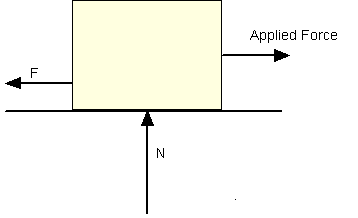Laws of Friction
Category: Mechanical Articles
21 Oct 14
Coulomb in 1781 conducted several experiment on t he friction of plane on dry surface. On the basis of his experiments he stated some laws of friction which as follows –
- Law of static friction
- Law of dynamic or kinetic friction
Laws of static friction
- Friction force always opposes the motion (or tendency of motion) of the body.
- The magnitude of frictional force is exactly equal but opposite in direction to the applied force component in the direction of motion.
- For two given surfaces maximum friction depends on Rn and is independent of the extent of area of surfaces in contacts.
- The frictional force depends upon the roughness of the surfaces.
- The dynamic frictional force is less than static frictional force.
- Sliding friction is more than rolling friction.
- Tangent of angle of friction is equal to coefficient of friction
Laws of dynamic friction
- The frictional force always acts in direction, opposite to that in which the body is moving.
- For moderate speeds, the force of friction remains fairly constant. But it decreases slightly, with increase of speed.
- he magnitude of kinetic frictional force bears a constant ratio to the normal reaction Rn between the two surfaces. But this ratio is slightly less than that in case of limiting friction.


